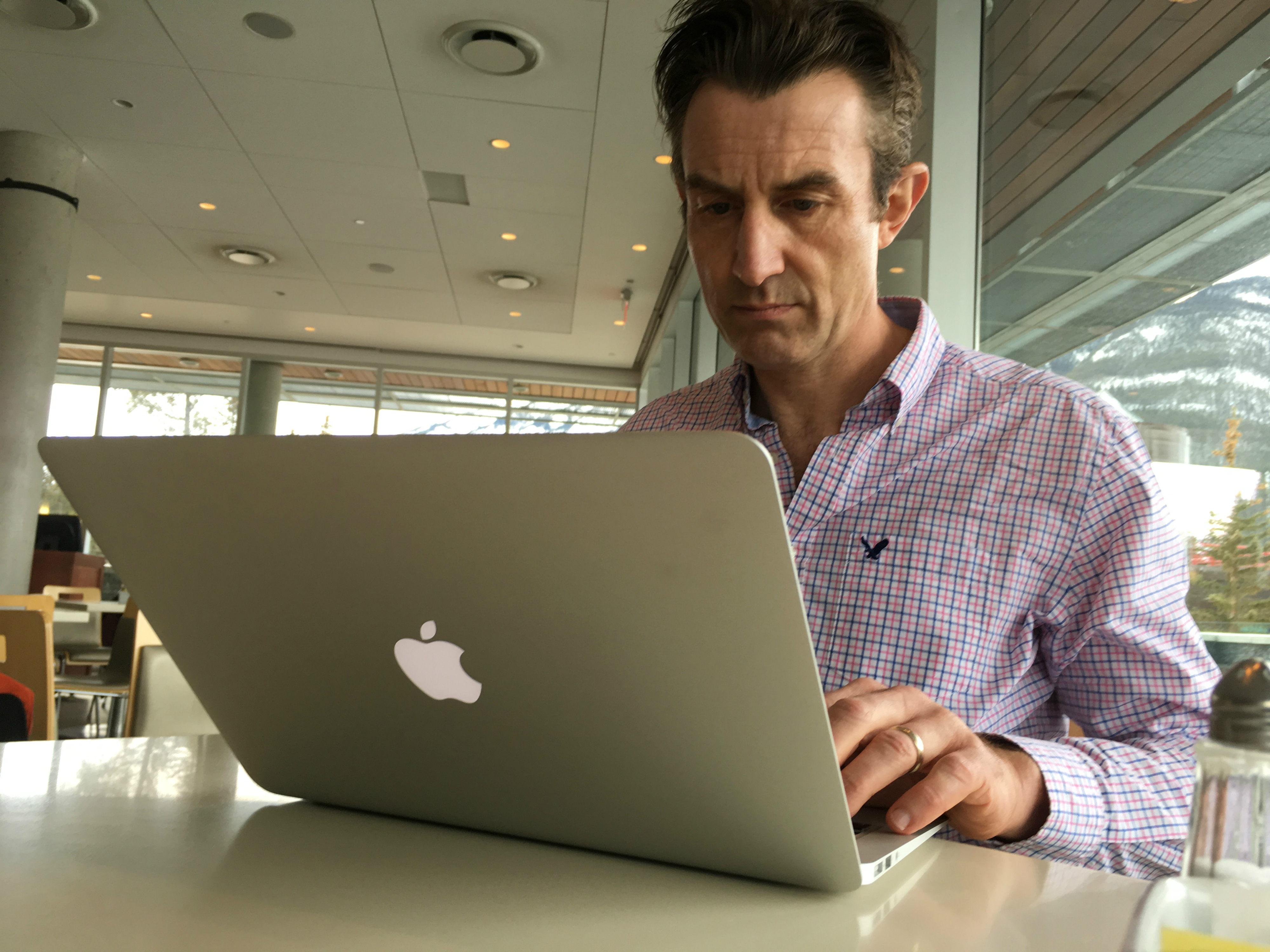Making A Killing At The Stock Market: Econ Writer Takes A Stab At Crime Fiction

Today, Paddy Hirsch is writing about fear and greed. Just like he does most days.
It’s those two sins that drive a lot of what happens on Wall Street, Hirsch says. And he’s seen a lot of it — Hirsch has covered the financial world for more than a decade, both as an author and a business journalist for places like CNBC and NPR’s Marketplace.
Last month, he was at The Banff Centre, adding a new entry to an-already impressive C.V.: crime writer.
“It so much more difficult. It really is,” Hirsch says.
“[With non-fiction,] you're dealing with hard facts and there are limits on you, as you can only put those hard facts down on the page … When you're dealing with fiction, the sky is the limit.”
Hirsch is one of about half-a-dozen writers in the Centre’s inaugural Crime Writing Residency, crafting tales of murder and mystery under the tutelage of crime novelists Michael Robotham and Louise Welch.
While he’s making the switch from reporting to fiction, Hirsch is not ready to leave the world of finance behind. His story takes place in 1800s New York, a tale of unrestrained capitalism, greedy investors and, of course, murder.
“When you are writing crime fiction really only murder will do,” he says.
“Yes, you can rip people off for millions of dollars and all the rest of it, but really, when it comes to this kind of fiction somebody's got to be a body.”
Hirsch’s book is a mix of fact and fiction, set in the financial panic of 1792, which almost brought a still-young American economy to its knees.
He explains that banker William Duer and a few of his pals had tried to make some extra cash with what was effectively a Ponzi scheme. They hoped to drive up the price of some government bonds they owned. Instead, they caused New York’s economy to collapse and destroyed lives, Hirsch said. And, of course, they basically got away with it — history that would repeat itself during the financial collapse of 2008.
Different century, same story.
“This cataclysm happens, you know, the whole world nearly fell apart, depending on who you listen to. But nobody went to jail, nobody seems to be culpable.”
In researching the crimes of those bankers, Hirsch felt something was forgotten by history — the people whose lives were ruined. The written accounts from that time period are thin, mostly letters sent to back and forth among New York’s monied elite. Missing are the stories of the actual people who lost their savings, their homes and their jobs to the devils of fear and greed.
Hirsch realized that to get to the real truth of what happened, he would need to make some of it up. A fictional account could give better voice to those forgotten people who bore the brunt of Duer’s crimes. To do otherwise would be to leave half the story untold.
“The greater a picture of the real person that you have, the easier it is for you to connect to the history,” he said.
“So, if you only have a very thin sketch of that person it's very difficult for you to connect with with him or her. With their stories.”
The fiction approach also allows him to craft something a little more satisfying. Unlike the messiness of reality, Hirsch gets to decide who lives and dies in his world, who walks free and who gets punished. It means more freedom but, at the same time, higher expectations.
“I need to make sure that this story makes sense and the people enjoy it,” he says.
“If they feel like that at the end of there was no resolution there, maybe I haven't done my job properly.”